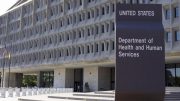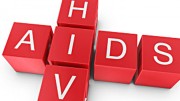By: Chuck Colbert /TRT Reporter
Thirteen leading U.S. organizations in the fight against HIV/AIDS have called on the Food and Drug Administration and Gilead Sciences to approve pre-exposure prophylaxis, or PrEP, for HIV prevention among gay and bisexual men, also referred to as men who have sex with men (MSM), and transgender women.In an Oct. 18 letter, the not-for-profit organizations and coalitions – including Fenway Health and the AIDS Action Committee of Massachusetts – urged the FDA and Gilead to approve antiretroviral drugs for prevention now for MSM and transgender women and not wait until the drug regimen’s safety and effectiveness for (heterosexual) women is assessed.
“Critical and necessary efforts to understand how PrEP interacts with hormonal contraception, or how PrEP may impact pregnancy … should not delay access to a potentially lifesaving form of HIV for MSM,” the letter states.
Antiretroviral medication in the form of a pill, marketed by Gilead as Truvada, has been shown to be effective in treatment of HIV.
More important, recent trials have shown that antiretroviral drugs, along with behavioral intervention strategies, hold the potential to prevent new HIV infections – reducing the risk of infection as much as 42 percent among transgender women and MSM.
“This has great potential to be a game changer in the fight against AIDS for gay men,” said Sean Cahill, Ph.D., the newly appointed director of Health Policy Research at The Fenway Institute.
“If we have an intervention that could potentially bring down new infections, why would we not want to do that?” said John Gatto, senior vice president of Programs at the AIDS Action Committee of Massachusetts.
“Truvada has already been proven to bring down new infections among gay and bisexual men while its efficacy among heterosexuals is unclear,” he said, adding, “We don’t want to wait any longer when we could prevent new infections among the highest at risk, the highest-prevalence population while more study is done on others.”
During telephone interviews, both Cahill and Gatto voiced a note of urgency. They pointed to data from the U.S. Centers for Disease Control, which estimates that MSM account for more than half of all new infections nationwide, about 50,000 annually, with the overall rate of HIV infections remaining level for recent years.
But, in 2009, the last year of available data collection, an estimated 64 percent of all new HIV infections were in MSM, primarily because of unprotected anal intercourse, said Cahill, even though they are estimated at only 2 percent of the population, he said.
“Gay and bisexual men continue to bear a disproportionate burden of HIV,” Cahill said, “especially black and Latino gay men. We need to try new approaches that complement what we already know works.”
Worse yet, the HIV risk for MSM is growing. For example, between 2006 and 2009, CDC estimates found a 34 percent increase in HIV infections in young MSM and an even higher increase – 48 percent – in young African American MSM over the same time period.
What accounts for the continuing problem of HIV/AIDS infection within the gay community is an open question.
But the baby boom generation of gay men, “who lived through the early stages of the epidemic and saw our friends die, understand HIV/AIDS as a public health crisis,” said Gatto. “Now, younger populations who don’t have that experience don’t relate to this as a public health crisis in the same way,” he said.
“Substance abuse remains a problem in the gay community, and that contributes to risk behaviors,” Gatto added.
“The broader picture,” said Cahill, “is there are way too many STDs in the US, almost 20 million every year. Half are occurring among young people ages 15 to 24.”
“We do a bad job of promoting sexual health in this country,” Cahill said. “We are not teaching sex education in the schools, not providing people the information they need to keep safe.”
Nonetheless, new HIV infections are down in Massachusetts. Why is that?
AIDS Action Committee’s Gatto pointed to several contributing factors. One is that state lawmakers passed legislation granting a Medicaid waiver, which enables people with an HIV-positive status access to treatment. In other states, only those with AIDS diagnoses are eligible.
“The sooner people are in treatment, the less likely they are to transmit the virus to others when in a situation [where transmission is possible],” Gatto said. “Getting people into treatment helps bring down the infection rate because there is less virus in the system and [therefore] less likely to be transmitted.”
Another factor, he said, is the state’s 2006 health care reform, which while not guaranteeing access to treatment has increased enrollment in health insurance and health care.
Yet another factor, Massachusetts does not have a waiting list for the HIV Drug Assistance Program, unlike in other states where newly diagnosed people do not necessarily have access to treatment right away, Gatto said.
Additionally, the state has good behavioral-intervention strategies, including HIV testing, needle exchange and syringe access.
“There are studies that show once people know their HIV status, they
are less likely to engage in risky behavior,” said Gatto. “The more people who get tested, the less likely they may transmit the virus to others,” he explained.In another risk-reduction measure, lawmakers passed legislation in 2006 that permitted syringe access through any pharmacy and without a prescription. Previously, injection drug users had to rely on one of the four needle-exchange locations in the state.
Other targeted behavioral intervention programs, including social support wraparounds for MSM, transgender persons, and homeless youth, may also account for reduced HIV-infection rates in Massachusetts.
Altogether, “Targeted behavioral interventions are evidence based and proven to be effective,” said Gatto. “Massachusetts is ahead of the curve when you look at HIV/AIDS nationally.”
Indeed, the state is the only one in the country to see dramatic reductions in new diagnoses of HIV. Over the last decade, the state has cut new diagnoses of HIV by 59 percent, which will save the state more than $1.6 billion in health care costs.
Over the same period, thanks to better health outcomes, the number of people living with HIV in the state has risen by 42 percent.
Will continued cuts in state and federal funding for the demonstrably effective HIV education and outreach put these gains at risk? Time will tell.
Meanwhile, experts like Gatto and Cahill are calling on the federal government to use every tool available to reduce new infections.






